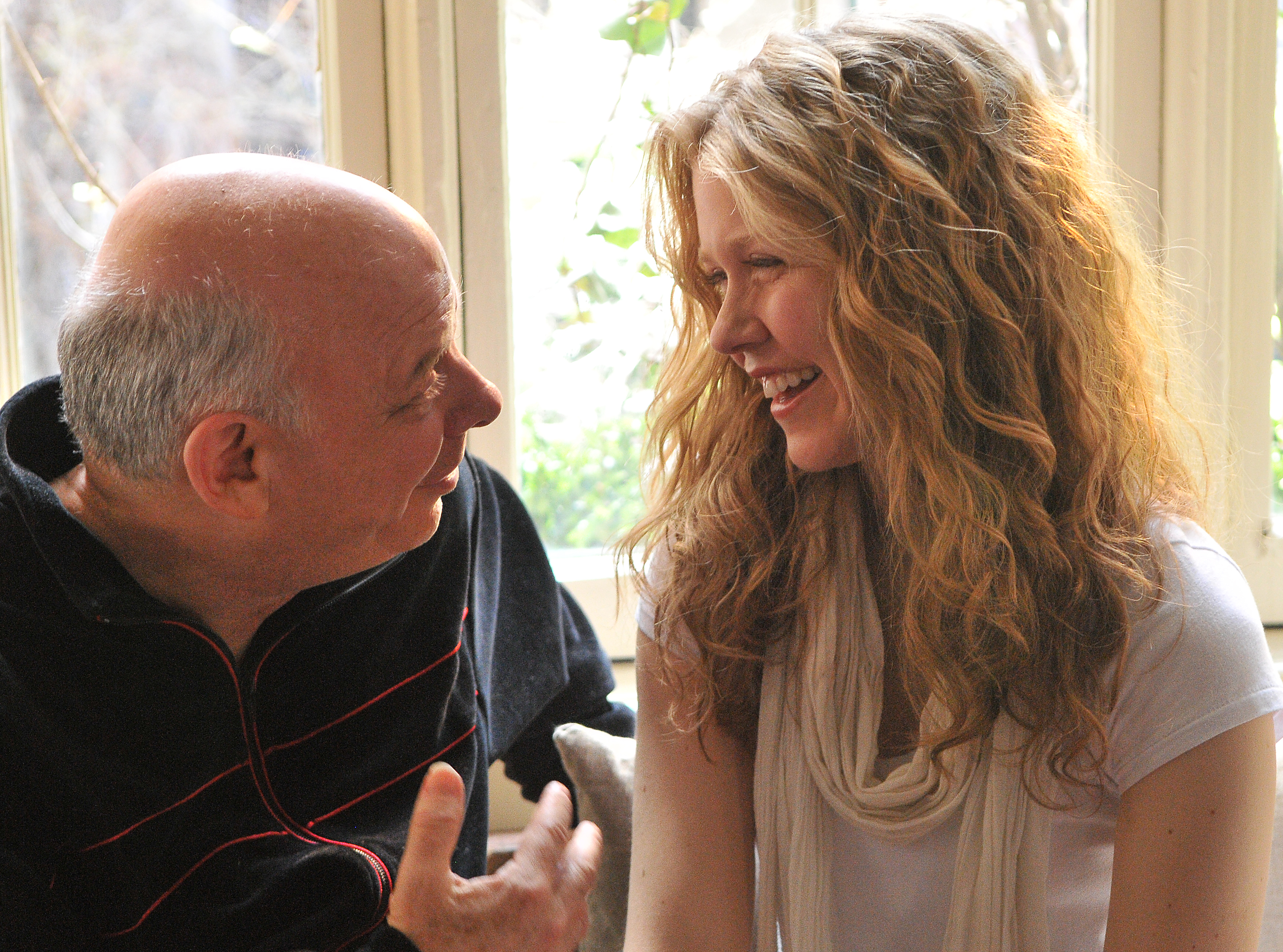There’s a built-in audience for the latest collaboration between Andre Gregory and Wallace Shawn, given the widespread arthouse affection for My Dinner With Andre and Vanya on 42nd Street. I’m certainly part of that audience, though I’d rather have seen their rendition of Ibsen’s problematic play in the theater. But after 14 years of development, it was performed only a handful of times to invited audiences in Greenwich Village—then thriftily filmed by Jonathan Demme. So this is what we’ll have to take.
Gregory has only a few scenes as Brovik, the broken-down old draftsman who’s given his life to the controlling, ever-ambitious Solness (Shawn). In Shawn’s free imagining of the text, the usually vital Solness is on his sickbed, attended by nurses and many beeping medical machines. Though enfeebled, he still rules the household like a petulant toad, bullying his underlings (Jeff Biehl and Emily McDonnell) and wife (Julie Hagerty). Then the avid and possibly insane young Hilde (Lisa Joyce) inexplicably arrives, and Solness springs out of bed. Springs, I tell you!
If Solness then never leaves the house or changes out of his pajamas, that’s also an indication of how Shawn has relocated the play in the nether-space between Solness’ ears. He has a lifetime of regrets and misdeeds to consider, and Hilde becomes his spiritual guide—like Scrooge’s sole ghost (in sexy white hiking attire, no less). His mental state isn’t one of Trumpian hubris—he’s more of a developer than an architect—so much as “an awful state of uninterrupted anxiety.” Instead of being put to the rack, Solness is gently pushed to the couch. He’s more neurotic than malign. Even when confessing the possible arson-by-inattention of his wife’s beloved old house, he shrugs off the guilt like a bad order of borscht. Well, I didn’t want it anyway. I wasn’t even hungry.
While Shawn gives Solness a muffled, shifty kind of villainy, Joyce has been directed to go in the other direction; she shouts from every hilltop, and then some. By turns hysterical, girlish, teary, and seductive, this Hilde has less to do with Ibsen’s heightened naturalism than the demons of Solness’ conscience. In a different kind of stage tale, she’d be called a fury, a sprite, or an enchantress. And I’m not sure these two modes are compatible. Gregory and Shawn have knocked Solness off his pedestal (there’s your plot, essentially), made him more of a peevish, recognizable human of the early 21st century who might be sitting next to you on the subway. But Hilde clearly never rides the subway (a zephyr or a unicorn, maybe).
Perhaps what Gregory (as stage director) and Shawn (as writer) are trying to do is this: Take the autobiographical 1892 play’s biggest flaw, the implausible Solness/Hilde relationship, and exaggerate it, make it even bigger. There is no reconciling his brick-and-mortar egotism with her ethereal insistence; it can’t be done. Hilde may force amends on those around Solness, those who act in accordance with the normal laws of society, but Solness is not such a man. And for his final accounting, even if only in a fever-dream, it takes a creature of his own design. Opens Fri., Sept. 12 at Varsity. Not rated. 127 minutes.
bmiller@seattleweekly.com








